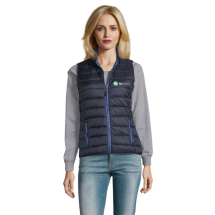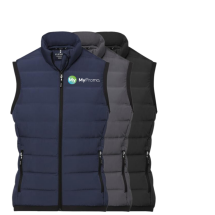Feathers
What are Feathers?
Feathers, an organic material, have played a pivotal role in both natural and human-engineered environments. Traditionally known for their role in avian biology, feathers have transcended their biological purpose to become a significant component in the manufacturing and promotional gifts sectors. The allure of feathers lies in their unique combination of lightness, resilience, and beauty, which has been recognised since ancient times when they were used for decoration, ceremonial purposes, and insulating garments.The sourcing of feathers involves a careful and ethical process, typically derived from birds during natural moulting periods or as a by-product of poultry farming. These feathers are then cleaned, sterilised, and sorted according to size, type, and quality, ensuring that their natural aesthetics and properties are preserved while adhering to environmental and ethical standards.
Exploring the Unique Qualities of Feathers
Feathers are distinguished by their exceptional lightweight and insulating properties, making them an ideal choice for a wide range of applications. Their structure allows for high flexibility and elasticity, which is advantageous in products requiring both comfort and durability. The natural water-resistant qualities of certain types of feathers, such as those from ducks and geese, further enhance their usability in various manufacturing sectors.
Versatile Applications of Feathers
In the world of manufacturing, feathers are used to create an array of products, ranging from luxurious bedding, such as pillows and duvets, to high-fashion items like feather boas and embellishments for garments. In the realm of promotional gifts, feathers are often used to craft unique, eye-catching items such as feather pens, personalised bodywarmers, or ornamental masks, which can be personalised to enhance brand visibility and memorability. The aesthetic appeal and tactile sensation of feathers offer a distinctive advantage in creating promotional products that stand out.
Advantages and Challenges of Using Feathers
Feathers provide a sustainable option compared to synthetic materials, primarily due to their biodegradable nature and renewable sourcing. However, the use of feathers is not without challenges. The quality and properties of feathers can vary significantly, requiring rigorous sorting and processing to ensure consistency in end products. Moreover, ethical concerns regarding sourcing, especially from exotic birds, necessitate strict adherence to wildlife protection standards to mitigate any negative ecological impacts.
Comparing Feathers to Other Materials
When compared to synthetic fibres, feathers offer superior breathability and moisture-wicking properties, which are particularly beneficial in bedding and apparel. Unlike plastics and other man-made materials, feathers introduce an element of organic elegance that is difficult to replicate artificially. However, their durability and uniformity might fall short when compared to engineered materials, which are designed to meet specific, consistent standards across all metrics of performance.
Conclusion
Feathers, with their natural elegance and functional benefits, continue to be a material of choice in various manufacturing domains, particularly in sectors where uniqueness and tactile quality are prized. Despite the challenges associated with their variability and ethical sourcing, feathers’ enduring appeal in the promotional gifts industry and beyond underscores their significance and versatility as a material. As manufacturing techniques evolve and consumer preferences towards sustainable and natural products grow, the role of feathers is set to become even more prominent.
| Feather Type | Source | Characteristics |
|---|---|---|
| Down | Ducks, geese | Very light, excellent insulation, soft |
| Contour | Most birds | Smooth, streamline shape, covers the body |
| Flight | Wing and tail feathers | Strong, rigid, aids in flight control |
| Decorative | Peacocks, exotic birds | Brightly coloured, often used for decoration |
| Plume | Ostrich, various birds | Large, soft, often used in the fashion industry |
What are feathers made of?
Feathers are composed primarily of keratin, which is the same protein that makes up human hair and nails. This protein provides durability and flexibility, making feathers lightweight yet strong.
How are feathers sourced ethically?
Ethical sourcing of feathers often involves collecting them during natural moulting cycles of birds, or as a by-product of the poultry industry where birds are raised for meat. Companies are increasingly adhering to strict standards that ensure no harm comes to birds during the feather collection process.
Can feathers be considered a sustainable material?
Yes, feathers are considered a sustainable material because they are a natural by-product of the poultry industry and are biodegradable. Using feathers can help reduce waste and utilise materials that might otherwise be discarded.
What are the main uses of feathers in manufacturing?
In manufacturing, feathers are primarily used in the fashion industry for decorations and insulating garments like jackets and sleeping bags. They are also popular in home decor, particularly in luxury bedding products such as pillows, duvets, and mattress toppers.
What are the unique properties of feathers?
Feathers are known for their incredible lightness and insulation capabilities. They also have a unique structure that allows for high elasticity and flexibility. Certain types of feathers, like those from ducks and geese, offer water-resistant properties as well.




